Action of nicotinic acid on the reversion of hypoxic-inflammatory link on 3T3-L1 adipocytes
- PMID: 27164826
- PMCID: PMC4862071
- DOI: 10.1186/s12944-016-0260-1
Action of nicotinic acid on the reversion of hypoxic-inflammatory link on 3T3-L1 adipocytes
Abstract
Background: Hypoxia resulting from adipocyte expansion is considered the basis of the inflammatory milieu observed in Metabolic Syndrome. Nicotinic acid can act on adipocytes interfering on the inflammatory response. In this study, we investigated the role of HIF-1 α (hypoxia-inducible factor -1 alpha) in the inflammatory process induced by hypoxia. The effect of nicotinic acid on the PPARs (peroxisome proliferator-activated receptors) expression during the inflammatory response was assessed over its action under HIF-1 α in 3T3-L1 adipocytes submitted to hypoxia.
Methods: 3T3-L1 adipocytes were pre-treated with nicotinic acid and incubated under hypoxic conditions. The level of adipokines and HIF-1 α were quantified using immunoassays. Adipokine expression was measured using real-time PCR, whereas PPARs and HIF-1 α expression were analyzed by western blot. The statistical significance of the differences between variables studied was determined by analysis of variance (ANOVA) complemented by Bonferroni's test.
Results: The results demonstrated an increase in leptin and PAI-1 (plasminogen activator inhibitor-1) expression, while adiponectin production decreased under hypoxia. In parallel, induction with hypoxia enhanced HIF-1 α expression, despite causing reduced expression of PPAR α and PPAR γ. However, nicotinic acid reversed adipokine modulation under hypoxic conditions, leading to decreased HIF-1 α expression and increased PPARs expression.
Conclusions: Our findings suggest that nicotinic acid blunt the inflammatory response resulting from hypoxia by the reduction of HIF-1 α expression and concomitant increase of PPARs α and γ expression in 3T3-L1 adipocytes.
Keywords: Adipocyte; Hypoxia; Inflammation; Nicotinic acid; Obesity.
Figures
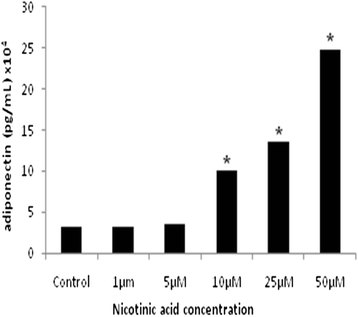

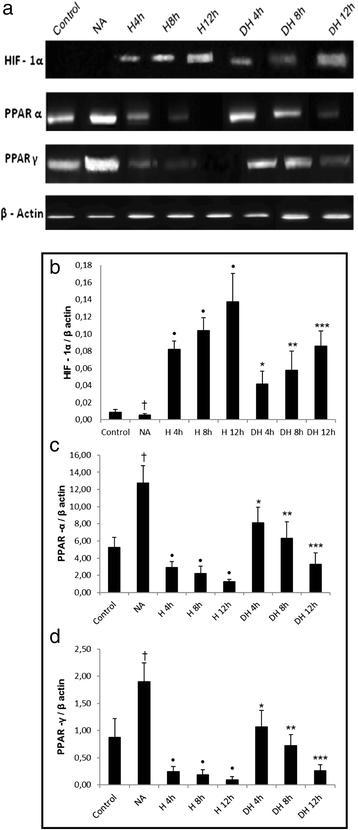
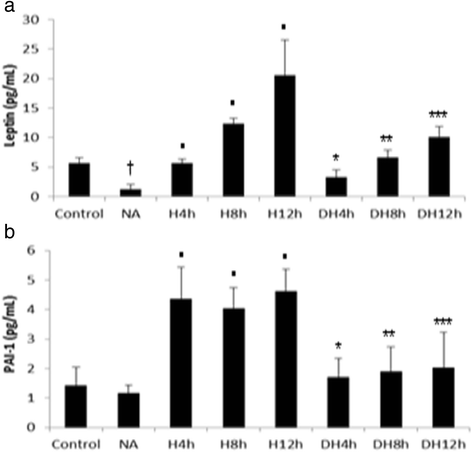
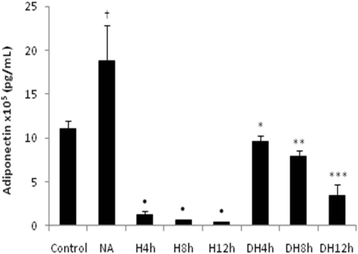
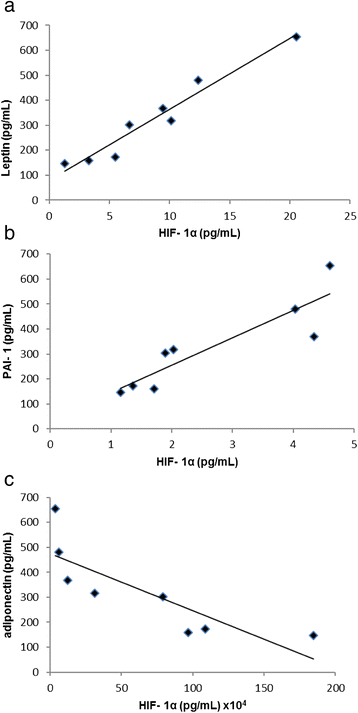
References
Publication types
MeSH terms
Substances
LinkOut - more resources
Full Text Sources
Other Literature Sources
Miscellaneous

